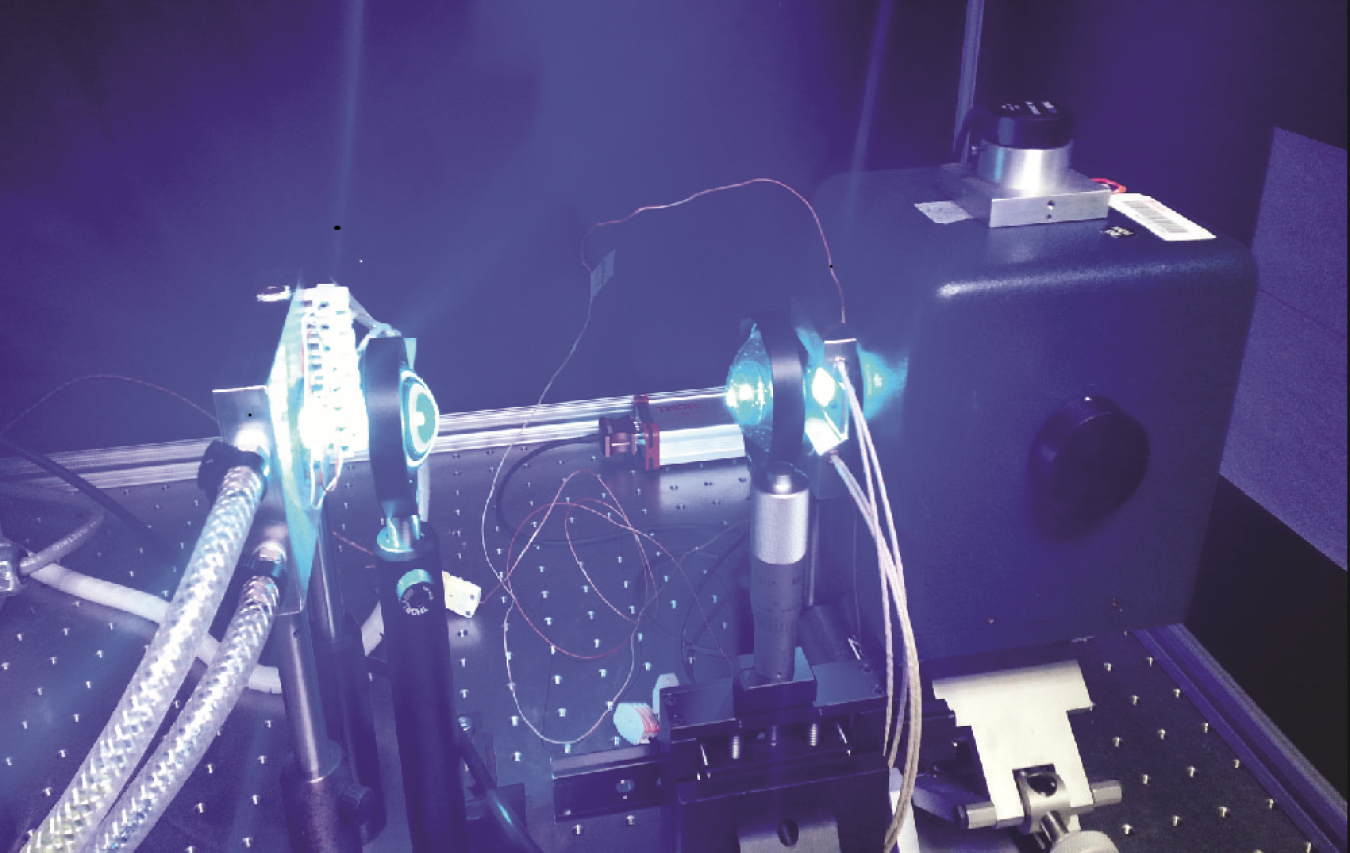
Operation of a blue LED using hybrid polymer film developed by Carnegie Mellon University.
The accumulation of heat in LED packages gives rise to a cascade of detrimental effects that reduce the optical and mechanical performance of LED lighting products. For that reason, heat accumulation has been identified as a major barrier to realizing higher efficiencies, drive currents, and reliability in phosphor-converted LEDs. The problem of heat accumulation is fundamentally rooted in the poor thermal conductivity of the polymer materials that are used as encapsulants in current LED designs. With the help of DOE funding, Carnegie Mellon University (CMU), in partnership with OSRAM Sylvania, is developing a new hybrid polymer platform that holds the promise to overcome these limitations in thermal conductivity.
At the center of this innovative approach is a novel surface chemical treatment (i.e., a film) that — when applied to nanoparticle additives — enables higher thermal conductivities as well as increased optical transparency stability compared to previous nanocomposite material technologies. Recent tests of the photothermal stability of the new material technology under realistic device-operation conditions support expectations that the stability of the new hybrid material platform is consistent with the requirements for LED applications.
The potential for performance improvement of LED devices by addressing the limitations of thermal conductivity of polymer encapsulants is significant. OSRAM Sylvania estimates that the targeted increase of the matrix thermal conductivity from 0.2 to 1.0 W/mK will allow manufacturers of LED lighting products to increase the current density by approximately 300% as compared to the current state of the art, thus increasing the luminous output of a given package by about 130% while retaining the acceptable package temperature. This improvement will decrease costs proportionately. So far, CMU has achieved roughly a threefold increase in thermal conductivity over materials that are currently in use, which represents a major step toward the project’s ultimate goal. (September 2016)
Return to Research Highlights.

